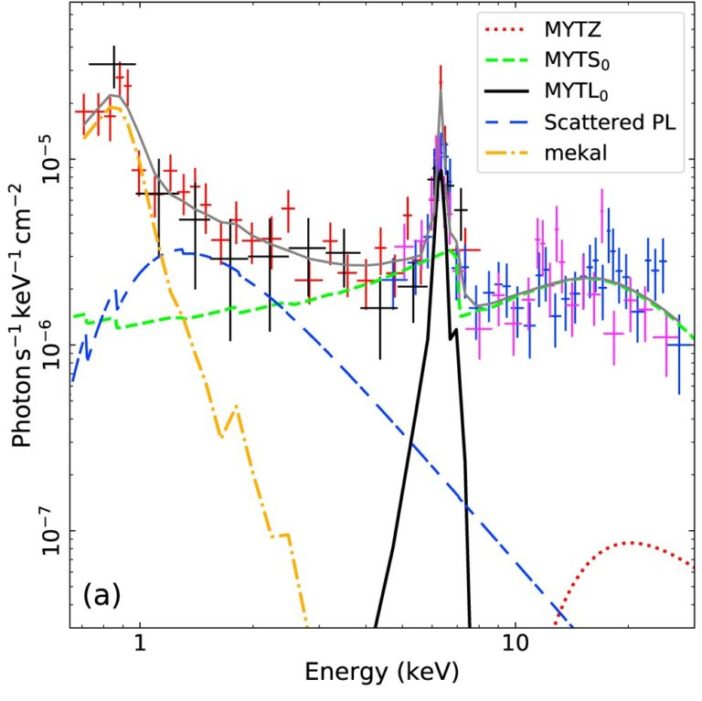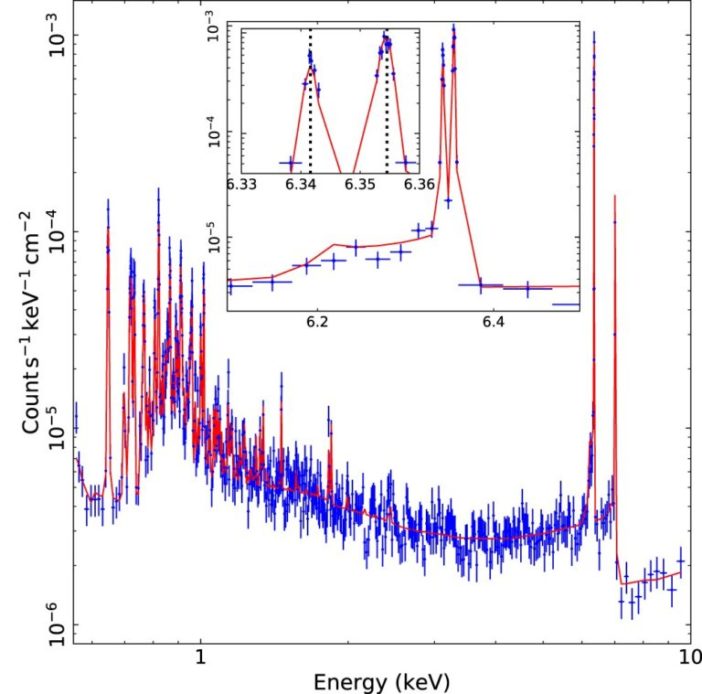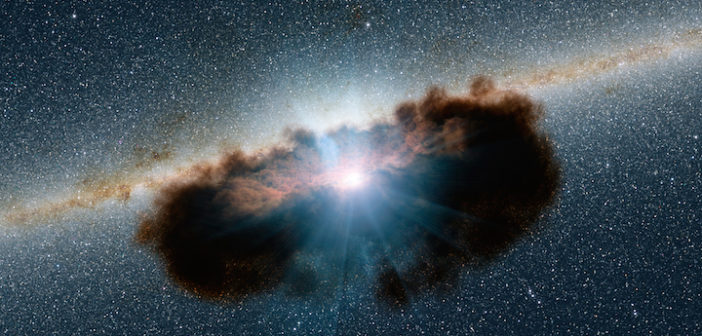Editor’s note: Astrobites is a graduate-student-run organization that digests astrophysical literature for undergraduate students. As part of the partnership between the AAS and astrobites, we occasionally repost astrobites content here at AAS Nova. We hope you enjoy this post from astrobites; the original can be viewed at astrobites.org.
Title: A Hard Look at NGC 5347: Revealing a Nearby Compton-Thick AGN
Authors: E. S. Kammoun et al.
First Author’s Institution: University of Michigan
Status: Published in ApJ
Black holes are some of the most interesting and extreme objects in the universe. Fortunately, we think that almost every galaxy in the universe has a supermassive black hole (SMBH) at its center, giving us many opportunities to study their environments. As matter falls towards a black hole, it forms an accretion disk — a flattened disk of gas and other debris — outside of its event horizon. This accretion disk is hot and emits radiation, even though we can’t see any light from the black hole itself. When SMBHs at the centers (or nuclei) of galaxies are actively accreting mass and emitting a huge amount of energy, we call them active galactic nuclei (AGN). The different structural components of AGN, shown in Figure 1, emit radiation across a wide range of wavelengths, from low-energy radio to high-energy X-rays and gamma-rays.

Figure 1: The structural components of an AGN. Matter orbiting the black hole forms an accretion disk. There is also a torus, a donut-shaped cloud of neutral gas and dust, that could obscure the light emitted by the disk. [Aurore Simonnet, Sonoma State University]
Compton-Thick AGN
The X-ray emission in AGN comes from a hot atmosphere of gas called the corona, which surrounds the accretion disk. In the corona, ultraviolet (UV) photons get scattered by really fast electrons, gaining enough energy to become X-ray photons (this is the inverse of Compton scattering). As these X-ray photons leave the corona, they run the risk of being absorbed by the surrounding torus of neutral hydrogen and dust. If there is enough neutral hydrogen (at least 1.5 x 1024 hydrogen atoms per cm2 to be exact), most of the X-rays are absorbed and we call the gas “Compton-thick”.
In order to reproduce the observed cosmic X-ray background, we expect that 10–25% of AGN should be Compton-thick (CT AGN). However, actual observations of AGN so far have estimated the fraction of CT AGN to be less than 10%. Are there actually missing CT AGN, or are some AGN misclassified?
NGC 5347 is an AGN that has been classified as both Compton-thick and Compton-thin by different methods, with an estimated hydrogen content differing by a factor of 10 between measurements. Today’s paper re-opens this question by analyzing new high-sensitivity observations of NGC 5347, as well as incorporating more physical models. This investigation could solidify the classification of NGC 5347, as well as help explain the “missing” fraction of CT AGN.
You Have to Look Harder
X-rays can be divided into two classes depending on their energy; lower energy X-rays are called soft, while higher energy X-rays are called hard. Hard X-rays are generally considered to have energies greater than 10 keV. In CT AGN, while most of the soft X-rays get absorbed, the hard X-rays can escape and reach telescopes!
The authors use observations from three different X-ray telescopes: previously available data from the Chandra X-ray Observatory and Suzaku, as well as new observations from NuSTAR. The new observations are particularly helpful, since NuSTAR is highly sensitive to the hard X-rays that actually make it out of the CT AGN.

Figure 2: X-ray spectra for NGC 5347. The y-axis shows the number of observed photons per time, per area, per energy. The x-axis corresponds to the energy of the X-ray photons. Data from Chandra and Suzaku are shown as red and black crosses, respectively. Data from NuSTAR, shown in pink and blue, make up the hard part of the spectrum. The best-fit model is shown in gray, and can be separated into the different components labeled in the legend. These different components represent different emission and absorption processes. [Kammoun et al. 2019]
Future Missions
One way for astronomers to classify sources as Compton-thick would be to measure the strength of iron emission lines such as Fe Kα, but current X-ray observatories are not able to resolve this emission line, at least not for NGC 5347. Simulating the spectrum of NGC 5347 as if it were observed by Athena — a future X-ray observatory — suggests that a clear Fe Kα could be resolved (Figure 3), making the classification of NGC 5347 easier.

Figure 3: Simulated X-ray spectrum for NGC 5347. Counts in the y-axis represent the number of photons, and the x-axis corresponds to the energy of the X-ray photons. The smaller squares are zoomed in to the ∼ 6 keV region of the spectrum, to show the Fe Kα emission lines. [Adapted from Kammoun et al. 2019]
About the author, Gloria Fonseca Alvarez:
I’m a third year graduate student at the University of Connecticut. My current research focuses on the inner environments of supermassive black holes.

